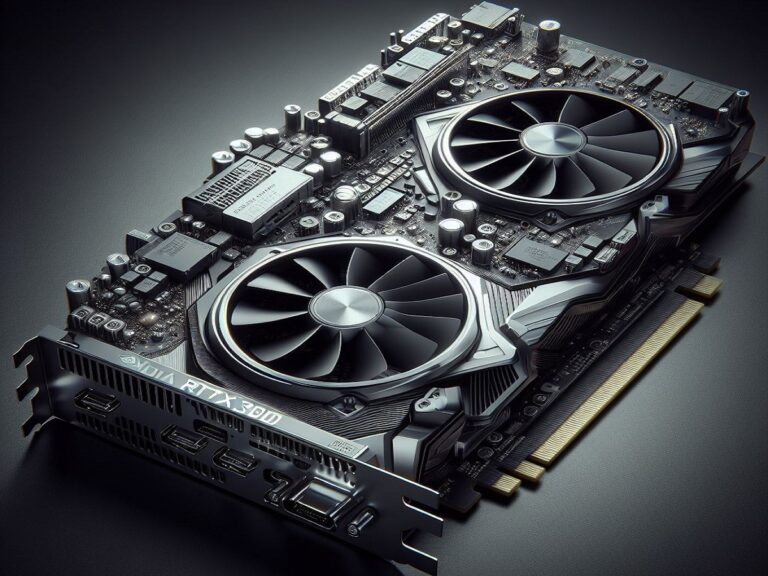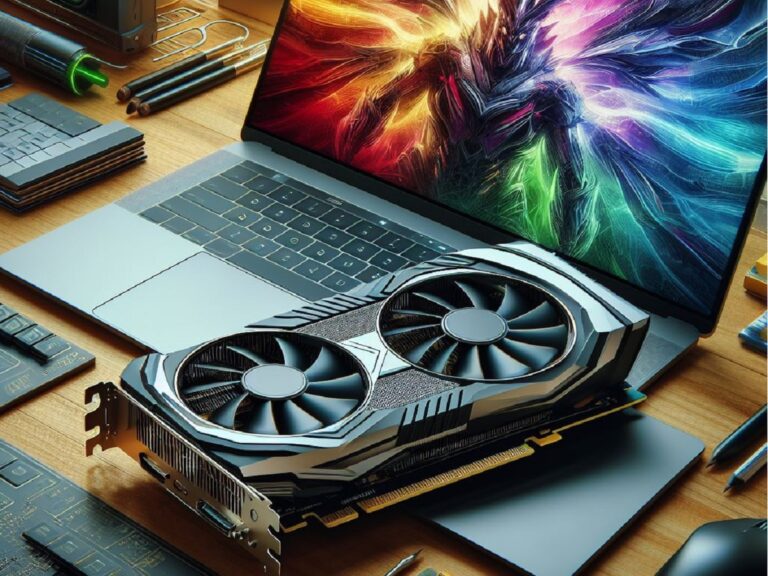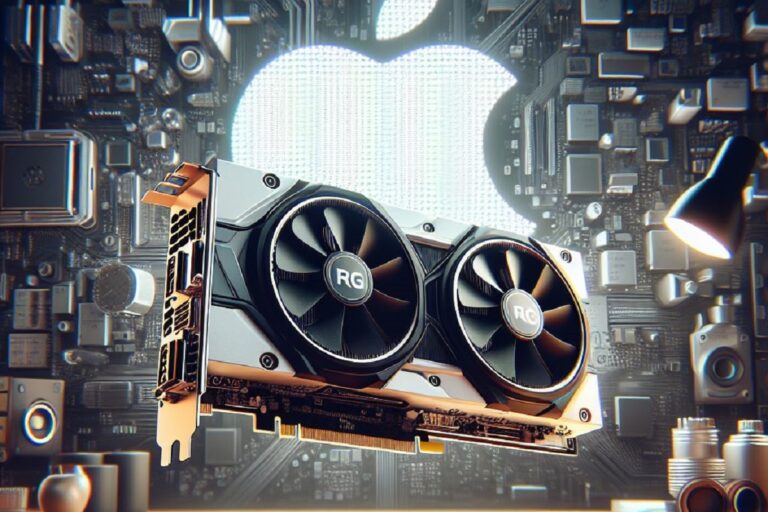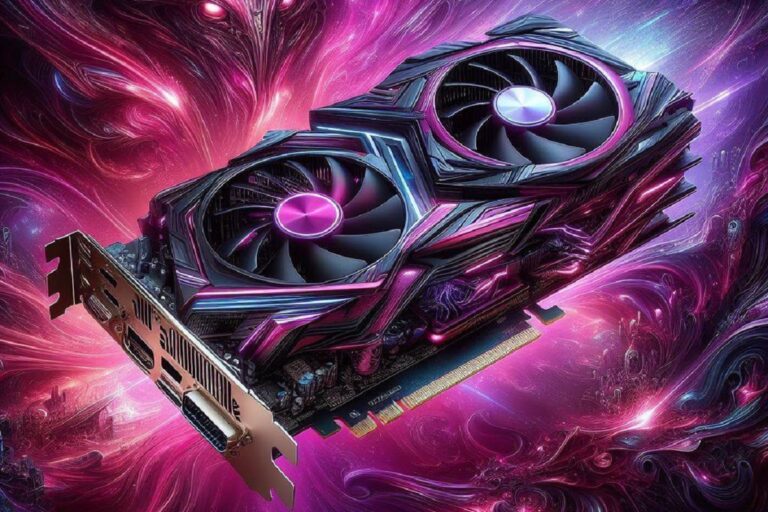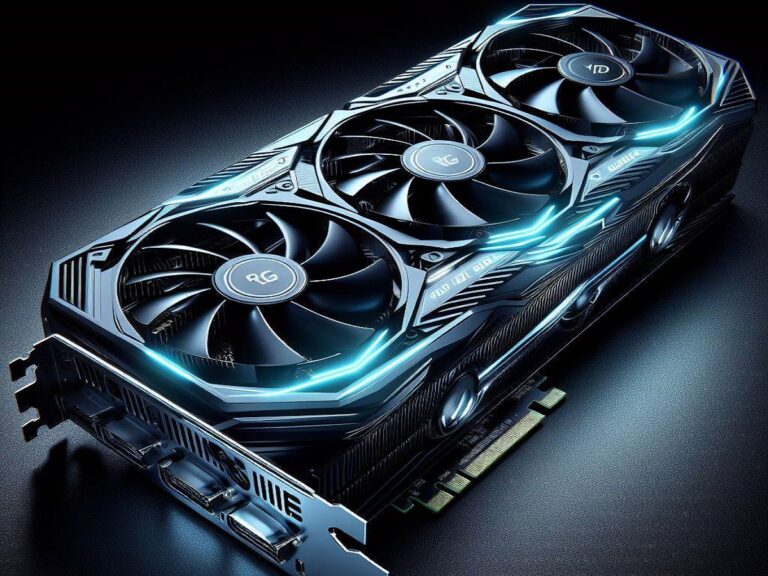Are you a graphic designer wielding the power of creativity but battling limitations with your current graphics card? Look no further! This guide equips you with the knowledge to choose the ideal graphics card, the unsung hero that breathes life into your design projects.
A powerful graphics card acts as the accelerator for your design software, ensuring smooth performance, flawless rendering, and exceptional visual fidelity. Whether you’re manipulating complex 3D models, editing high-resolution images, or crafting intricate vector graphics, the right graphics card empowers you to create without boundaries.
But with a plethora of options available, selecting the best graphics card for graphic design can feel overwhelming. Fear not! This guide delves into key factors to consider, explores top contenders, and helps you choose the graphics card that perfectly complements your design workflow and budget.
So, get ready to transform your design experience. Let’s embark on a quest to find the graphics card that unlocks your full creative potential!
Top 6 Best Graphics Card for Graphic Design
-
MSI Gaming GeForce RTX 3090 24GB GDRR6X: Best Graphics Card for high-end gaming and content creation.
-
EVGA GeForce GTX 1660 SC Ultra Gaming: Best Graphics Card for budget-friendly gaming performance.
-
Zotac Gaming Graphics Card GEFORCE RTX 3060: Best Graphics Card for mid-range gaming and productivity.
-
ASUS Dual GeForce RTX 4070 Super OC Edition Graphics Card: Best Graphics Card for high-performance gaming and professional work.
-
MSI Gaming GeForce GT 710 2GB GDRR3: Best Graphics Card for basic computing and multimedia tasks.
-
ASUS TUF Gaming RX 7800 XT OC: Best Graphics Card for immersive gaming and content creation.
1. MSI Gaming GeForce RTX 3090 24GB GDRR6X
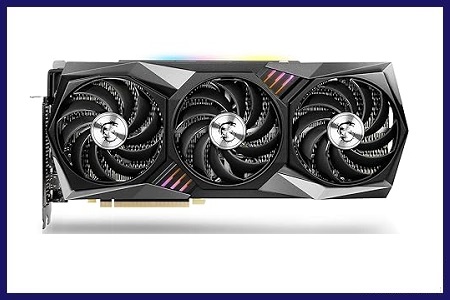
Key Features
The MSI Gaming GeForce RTX 3090 24GB GDRR6X isn’t for everyone. It’s a behemoth of a card with a price tag to match. But for those who demand the absolute best, it’s a dream come true.
Boasting the mighty NVIDIA RTX 3090 GPU and a whopping 24GB of GDDR6X memory, this card obliterates benchmarks. Creative professionals will adore the smooth sailing in applications like Adobe Premiere Pro and Maya. Rendering times plummet, freeing you to focus on creating, not waiting. Gamers will be floored by the ability to crank settings to max and achieve frame rates that ensure butter-smooth gameplay.
Of course, packing this much power necessitates a robust cooling solution. MSI’s Tri-Frozr 2 thermal system utilizes multiple fans and a large heatsink to keep the card from throttling under pressure. While effective, the cooler contributes to the card’s bulk, so make sure your case has ample space.
MSI prioritizes performance in the design, but aesthetics aren’t forgotten. The card features a sleek industrial design with gunmetal accents. RGB lighting adds a touch of personalization, though it’s subtle compared to some other options.
The bottom line? The MSI Gaming GeForce RTX 3090 24GB GDRR6X is undeniably expensive. But for those who need the absolute best for professional design work or ultra-high-end gaming, it justifies its price tag. The combination of raw power, ample memory, and a capable cooling system makes this card a champion for the creative and gaming elite.
There are some caveats, though. The price is a significant investment, and the card’s substantial footprint demands a spacious case. Additionally, the RTX 3090 is a power-hungry beast, so ensure your power supply unit can handle its demands.
If you’re a professional who relies on top-tier performance or a hardcore gamer seeking the ultimate graphical experience, the MSI Gaming GeForce RTX 3090 24GB GDRR6X is a compelling option. But for more budget-conscious users or those with less demanding needs, other RTX 30 series cards might offer a better value proposition.
2. EVGA GeForce GTX 1660 SC Ultra Gaming
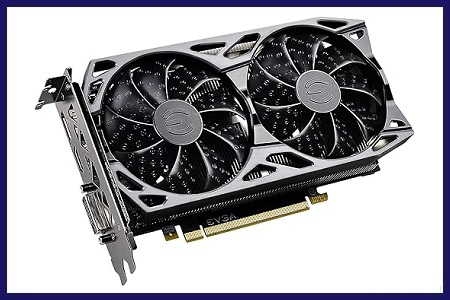
Key Features
The EVGA GeForce GTX 1660 SC Ultra Gaming hits the sweet spot for price-conscious PC gamers. It’s not the absolute strongest on the market, but it delivers smooth gameplay at 1080p resolution with high settings in most modern titles, all without breaking the bank.
Packing 6GB of GDDR6 memory, this GTX 1660 offers a good balance for handling textures and maintaining respectable frame rates. You can play esports titles and popular AAA games at high settings without sacrificing smoothness. It’s also power-efficient compared to some high-end cards, keeping your electricity bill friendly.
EVGA equips the SC Ultra Gaming with a dual-fan cooling system that keeps the card running cool and quiet, even under heavy loads. This is a major plus for gamers who prioritize a peaceful gaming environment.
The GTX 1660 SC Ultra Gaming’s relatively compact size makes it compatible with most ATX mid-tower cases. This is a win for gamers with limited space inside their PC.
EVGA goes for a clean, black design with a hint of RGB lighting on the side. It’s not the flashiest card on the market, but it complements most gaming setups without being overly ostentatious.
The EVGA GeForce GTX 1660 SC Ultra Gaming delivers capable performance at a competitive price. It’s a great choice for gamers who prioritize smooth 1080p gameplay without venturing into high-resolution territory. The efficient cooling, compact size, and understated design make it a well-rounded package.
There are some limitations to consider, though. If you crave higher resolutions like 1440p or 4K, this card might struggle to maintain consistently high frame rates at max settings. Additionally, with newer generations constantly emerging, the GTX 1660 might not be the most future-proof option.
If you’re a 1080p gamer on a budget or looking for a solid upgrade from an older card, the EVGA GeForce GTX 1660 SC Ultra Gaming is a strong contender. It offers a good balance of performance, price, and features, making it a worthy consideration for your next gaming PC build.
3. Zotac Gaming Graphics Card GEFORCE RTX 3060
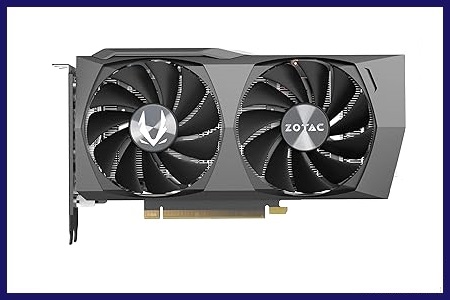
Key Features
Gamers on a budget rejoice! The Zotac Gaming GeForce RTX 3060 strikes a golden balance between affordability and performance, making it a fantastic choice for 1080p and even some 1440p gaming at high settings.
NVIDIA’s Ampere architecture muscles power the Zotac RTX 3060, delivering impressive performance. The 12GB of GDDR6 memory ensures smooth gameplay and efficient texture handling in modern titles. Conquer the competition in the latest shooter or explore vast open worlds – the RTX 3060 offers a responsive and visually stunning experience.
This Zotac card boasts a game-changer: NVIDIA’s DLSS (Deep Learning Super Sampling) technology. DLSS leverages AI to upscale lower-resolution images to near-native quality, boosting frame rates without sacrificing visual fidelity. Perfect for gamers seeking high frame rates in demanding titles. Additionally, the RTX 3060 supports ray tracing, the cutting-edge lighting tech that replicates real-world light behavior for incredibly realistic shadows and reflections. While ray tracing can be demanding, it adds undeniable immersion to compatible games.
Zotac equips the RTX 3060 with their IceStorm 2.0 cooling system, featuring multiple fans and a large heatsink. This setup effectively keeps the card cool and quiet, even during intense gaming sessions.
Aesthetics aren’t forgotten either. The Zotac RTX 3060 features a sleek industrial design with gunmetal accents. The card also boasts customizable RGB lighting, allowing you to personalize the look to match your setup.
The Zotac Gaming GeForce RTX 3060 offers a compelling package for budget-minded gamers. It delivers excellent performance for 1080p gaming and can handle some 1440p titles at high settings. The inclusion of DLSS and ray tracing technologies adds future-proofing and the potential for stunning visuals. The efficient cooling system and attractive design with customizable RGB lighting are just a bonus.
4. ASUS Dual GeForce RTX 4070 Super OC Edition Graphics Card
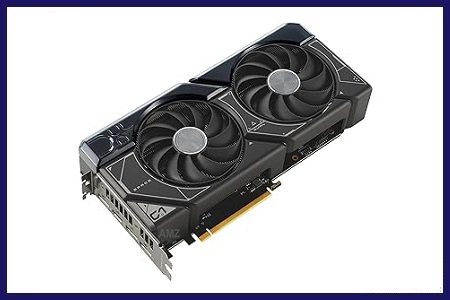
Key Features
Calling all design professionals and hardcore gamers! The ASUS Dual GeForce RTX 4070 Super OC Edition graphics card muscles in to power your creative dreams and fuel your most intense gaming sessions. But is it the right fit for you? Let’s dive in.
For creatives, the RTX 4070 Super OC boasts the muscle to tackle demanding design tasks. NVIDIA’s Ada Lovelace architecture and 12GB of GDDR6X memory ensure smooth performance in applications like Adobe Premiere Pro and Maya. Rendering times plummet, freeing you to focus on creating, not waiting.
Gamers can crank up the settings to max and experience eye-watering frame rates in the latest titles. DLSS 3, NVIDIA’s AI-powered upscaling technology, ensures stunning visuals without sacrificing performance. Plus, ray tracing delivers incredibly realistic lighting effects, adding another layer of immersion to your gameplay.
Packing this much power necessitates a robust cooling solution. ASUS equips the card with their Axial-tech fan design, featuring multiple fans and a large heatsink. This effectively keeps the card cool and quiet, even under heavy workloads.
The ASUS Dual RTX 4070 Super OC prioritizes performance, but aesthetics aren’t forgotten. The card features a sleek industrial design with gunmetal accents. Subtle RGB lighting adds a touch of personalization, though it’s not the flashiest card on the market.
There’s no denying the ASUS Dual GeForce RTX 4070 Super OC Edition is a high-end graphics card with a price tag to match. However, for those who demand the absolute best for professional design work or ultra-high-end gaming, it justifies its cost. The combination of raw power, ample memory, and a capable cooling system makes this card a champion for the creative and gaming elite.
5. MSI Gaming GeForce GT 710 2GB GDRR3
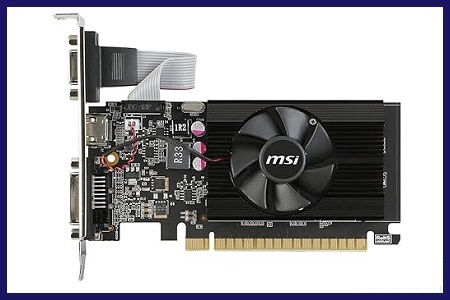
Key Features
The MSI Gaming GeForce GT 710 2GB GDRR3 carves out a particular niche for PC users. It’s not a high-end gaming champion, but it offers advantages for those on a tight budget or seeking a basic upgrade for an older system.
The GT 710’s main strength is its affordability. It injects new life into older PCs without demanding a big investment. This makes it suitable for casual gamers who play less demanding titles or those who prioritize other PC uses and just need a basic graphics card.
While not ideal for heavy gaming, the GT 710 handles everyday tasks with ease. Browsing the web, watching videos, and even running some older games are all within its capabilities. The 2GB of GDDR3 memory ensures adequate performance for these basic functions.
The MSI GT 710’s compact size makes it a good choice for small form factor PCs. Its low profile ensures compatibility with most pre-built desktops. Furthermore, it’s a power-efficient card, keeping your electricity bills down.
Keep in mind, the GT 710 struggles with modern, graphically demanding games. Frame rates will likely be low on high settings, making it unsuitable for serious gamers.
With newer generations of graphics cards constantly emerging, the GT 710 might not be the most future-proof option. If you’re looking for a card that will last for several years, you might want to consider a more powerful model.
The MSI Gaming GeForce GT 710 2GB GDRR3 is a solid choice for users on a budget or those with older PCs in need of a basic upgrade. It handles everyday tasks well and won’t break the bank. However, gamers looking for smooth performance in modern titles or users seeking a future-proof option should look elsewhere.
6. ASUS TUF Gaming RX 7800 XT OC
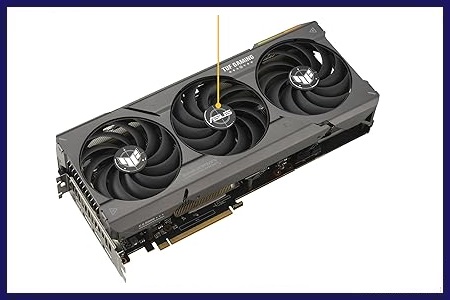
Key Features
Gamers seeking top-tier performance without emptying their wallets should look closely at the ASUS TUF Gaming RX 7800 XT OC Edition. This graphics card packs a punch, delivering excellent performance for 1440p and even some 4K gaming at high settings. It boasts a robust cooling system and an attractive, military-inspired design.
Armed with AMD’s RDNA 3 architecture and a whopping 16GB of GDDR6 memory, the ASUS TUF Gaming RX 7800 XT OC Edition is a powerhouse. It tackles modern games with ease, delivering smooth frame rates and stunning visuals. Dominate the competition in the latest esports title or explore vast open worlds in AAA games – this card offers a highly responsive and visually impressive experience.
Keeping the card cool and quiet under pressure is ASUS’s beefy triple-fan cooling system. This is a major plus for gamers who prioritize a peaceful gaming environment, especially during intense sessions.
The ASUS TUF Gaming RX 7800 XT OC Edition embraces a tough aesthetic inspired by military-grade equipment. The card features a robust metal shroud and a no-frills design that prioritizes performance over flashy RGB lighting.
The ASUS TUF Gaming RX 7800 XT OC Edition offers a compelling package for gamers seeking excellent performance at a competitive price. It delivers exceptional power for 1440p gaming and can handle some 4K titles at high settings. The robust cooling system ensures stable performance, and the design, while not flashy, prioritizes durability.
FAQs
What factors should I consider when choosing a graphics card for graphic design?
The most important factors include:
Type of design work: 2D vector graphics (logos, illustrations) require less processing power than 3D modeling and rendering (complex objects, animations).
Memory: More memory (8GB or more) is crucial for working with high-resolution images and textures.
Budget: Graphics cards range in price. Determine your budget and prioritize features that align with your design needs.
Software compatibility: Ensure the chosen card is compatible with your design software (check the software developer’s website for recommendations).
Power consumption: High-end cards can be power-hungry. Make sure your power supply unit (PSU) can handle the card’s requirements.
What are some good graphics cards for 2D graphic design?
For 2D design tasks, a mid-range card with ample memory is sufficient. Consider options like the NVIDIA GeForce GTX 1660 Super or AMD Radeon RX 5600 XT (both with 6GB of GDDR6 memory).
Do I need a powerful CPU as well?
Yes, a powerful CPU alongside your graphics card is essential for smooth performance in graphic design software. The CPU handles various tasks like calculations and file management, working in tandem with the GPU for efficient rendering and processing.
Is it important to have a lot of VRAM (Video RAM) for graphic design?
Yes, VRAM is crucial for storing textures used in your designs. Having more VRAM allows you to work with higher-resolution textures without sacrificing performance. Generally, 8GB of VRAM is a good starting point, but 16GB or more is recommended for demanding 3D design work.
What are some good graphics cards for 3D modeling and rendering?
For demanding 3D work, prioritize a high-end card with strong processing power and ample memory. Options like the NVIDIA RTX 3070 or AMD Radeon RX 6800 XT (both with 16GB of GDDR6 memory) are strong contenders.
Should I prioritize a specific brand of graphics card (NVIDIA vs AMD)?
Both NVIDIA and AMD offer excellent graphics cards for graphic design. NVIDIA cards are generally known for their strong performance in creative applications, while AMD cards might provide better value for the price. Research specific models within your budget to make the best choice for your needs.
